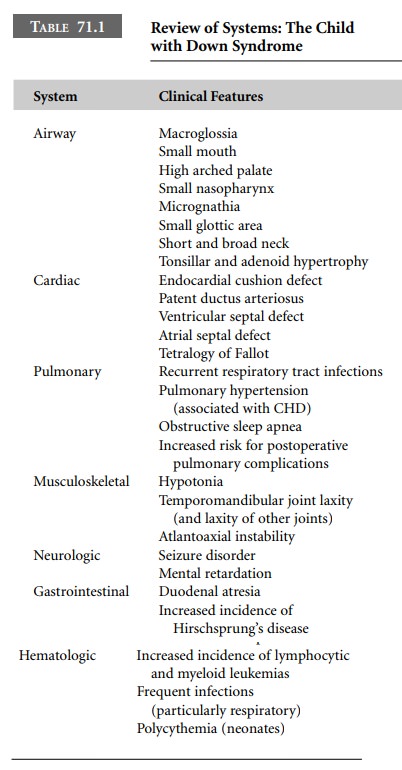Chapter: Clinical Cases in Anesthesia : MRI and the Down Syndrome Child
What are the clinical manifestations of Down syndrome?
What are
the clinical manifestations of Down syndrome?
Down syndrome (trisomy 21) is the most common
autosomal chromosomal abnormality causing mental retardation. It occurs in
approximately 1 in 800 live births. Children with Down syndrome can have
associated con-genital defects as well as other medical problems requiring
surgical intervention. The anesthetic management of these patients can present
many challenges.
The clinical manifestations of Down syndrome
that are of particular concern to the anesthesiologist include macroglossia,
micrognathia, obstructive sleep apnea, small subglottic area, and recurrent
pulmonary infections. Other considerations for the anesthesiologist include
hypotonia, atlantoaxial instability, seizure disorders, high arched palate, and
varying degrees of mental retardation. The cardiovascular system presents other
concerns. Congenital heart defects occur in 30–50% of children with Down
syn-drome. These lesions include endocardial cushion defects, ventricular
septal defect, atrial septal defect, patent ductus arteriosus, and tetralogy of
Fallot. Pulmonary hyperten-sion may also be present. A review of systems
specific to the patient with Down syndrome appears in Table 71.1.

Related Topics